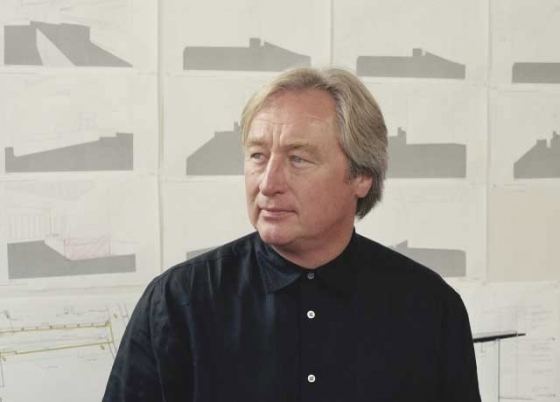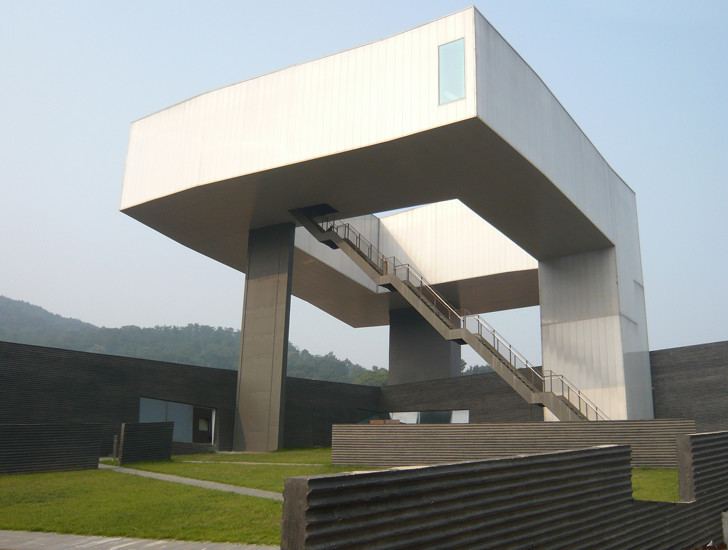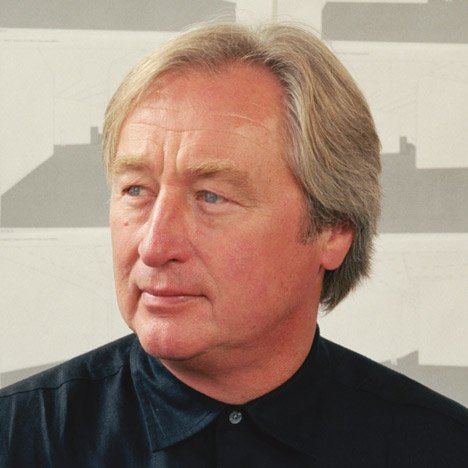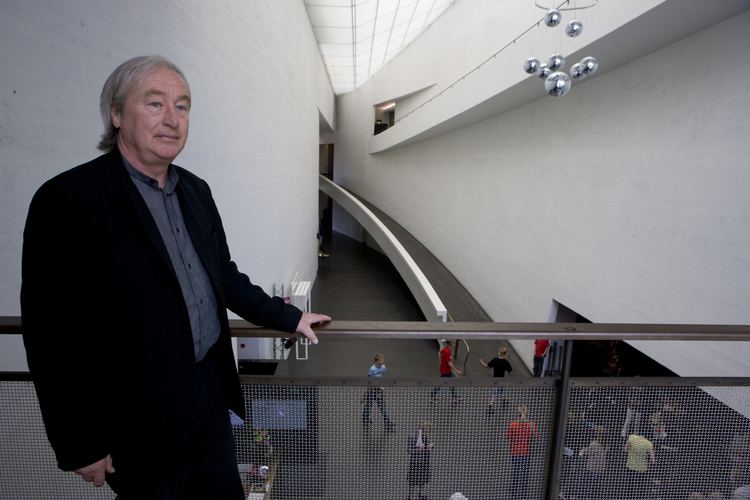Nationality American Role Architect Name Steven Holl | Practice Steven Holl Architects Occupation Architect | |
Alma mater University of WashingtonArchitectural Association School of Architecture Buildings Kiasma Contemporary Art Museum, Helsinki, Nelson-Atkins Museum of Art, Kansas City, Linked Hybrid, Beijing, Knut Hamsun Center, Hamaroy, Norway Books The Chapel of St. Ignatius, Questions of Perception Artwork Concept Watercolor for Canal House Types, Erie Canal Edge Structures Nelson‑Atkins Museum of Art, Kiasma, Simmons Hall, Storefront for Art and Architecture Similar People Juhani Pallasmaa, Jean Nouvel, Peter Zumthor, Alberto Perez‑Gomez, Lars Muller | ||
Discussions in architecture steven holl with preston scott cohen
Steven Holl (born December 9, 1947) is a New York-based American architect and watercolorist. Among his most recognized works are designs for the 2003 Simmons Hall at MIT in Cambridge, Massachusetts, the 2007 Bloch Building addition to the Nelson-Atkins Museum of Art in Kansas City, Missouri, and the 2009 Linked Hybrid mixed-use complex in Beijing, China.
Contents
- Discussions in architecture steven holl with preston scott cohen
- Steven holl spaces like music
- Family and Education
- Development
- Recognition and awards
- Teaching
- Early works
- Competition selections
- Selected publications
- References

Steven holl spaces like music
Family and Education

Holl was born on December 9, 1947 and grew up in Bremerton and Manchester, Washington. Holl graduated from the University of Washington and pursued architecture studies in Rome in 1970. In 1976, he attended graduate school at the Architectural Association School of Architecture in London and established his offices in New York City. For ten years after moving to New York, Holl slept in his office on a plywood shelf above the entry, showering at the nearby YMCA. Steven Holl leads his 40-person office with partners Chris McVoy and Noah Yaffe. Holl has taught at Columbia University since 1981.
Development

Holl's architecture has undergone a shift in emphasis, from his earlier concern with typology to his current concern with a phenomenological approach; that is, with a concern for man's existentialist, bodily engagement with his surroundings. The shift came about partly due to his interest in the writings of philosopher Maurice Merleau-Ponty and architect-theorist Juhani Pallasmaa.
Recognition and awards

In 1998 Holl was awarded the prestigious Alvar Aalto Medal. In 2000, Holl was elected to the American Academy of Arts and Letters. In July 2001, Time named Holl America’s Best Architect, for "buildings that satisfy the spirit as well as the eye." Other awards and distinctions include the best architectural design in New York for The Pace Collection showroom in 1986 from the American Institute of Architects, the New York American Institute of Architects Medal of Honor (1997), the French Grande Médaille d’Or (2001), the Smithsonian Institution’s Cooper-Hewitt National Design Award in Architecture (2002), Honorary Fellow of the Royal Institute of British Architects (2003), the Arnold W. Brunner Prize in Architecture from the American Academy of Arts and Letters, and the 2008 BBVA Foundation Frontiers of Knowledge Award in the Arts category. In 2007, Steven Holl Architects received the AIA Institute Honor Award and the AIA New York Chapter Architecture Merit Award for Art Building West for the School of Art and Art History (University of Iowa, Iowa City). The Higgins Hall Insertion at Pratt Institute (Brooklyn, New York) and the New Residence at the Swiss Embassy both received the AIA New York Chapter Architecture Honor Award in 2007. In 2010, Herning Museum of Contemporary Art, (Herning, Denmark) was awarded the RIBA International Award. The Horizontal Skyscraper-Vanke Center received the 2011 AIA Institute National Honor Award, as well as the AIA NY Honor Award. In 2011, he was named a Senior Fellow of the Design Futures Council., and Holl was named the 2012 AIA Gold Medal winner. In 2014, Holl was awarded the Praemium Imperiale Prize for Architecture. In 2016, Holl was named the 2016 laureate for The Daylight and Building Component Award for Daylight in Architecture.
Teaching
Holl is a tenured professor at Columbia University, where he has taught since 1981. He frequently teaches on the relationship between music and architecture.
Early works
Holl won first prize in the Amerika-Gedenkbibliothek International Library Design Competition in 1988, an expansion and renovation of the American Memorial Library in Berlin. In February, 1989 Holl's work was exhibited in a solo show at the Museum of Modern Art (MoMA) in New York City. MoMA later purchased twenty-five works by Holl for the museum's permanent collection. In the 1992 competition for a new contemporary arts museum in Helsinki, Finland, Holl's entry, entitled "Chiasma," won first prize out of more than five hundred international entries. The museum opened to the public in 1998, having permanently adopted the name "Kiasma," the Finnish translation of "chiasma."
In designing St. Ignatius Chapel (built 1994-1997), Jesuit chapel at Seattle University, Holl addressed the campus's need for green space by siting the chapel in the center of a former street and elongating the building plan. New green campus quadrangles were formed to the north, west, and south, and a future quadrangle is planned to the east. The plan of the chapel won a design award in the American Institute of Architects of New York. Holl designed the Chapel to symbolize "seven bottles of light in a stone box," by creating seven volumes of different light. Each volume represents a different part of Jesuit Catholic worship, and has differently colored glass so that various parts of the building are marked out by colored light. Light sources are tinted both in this way and by indirect reflection from painted surfaces, and each is paired with its complementary color.
Competition selections
Selected publications
Along with Pallasmaa and Alberto Perez-Gomez, Holl wrote essays for a 1994 special issue of the Japanese architectural journal A+U under the title "Questions of Perception: Phenomenology of Architecture." The publication was reissued as a book in 2006.
